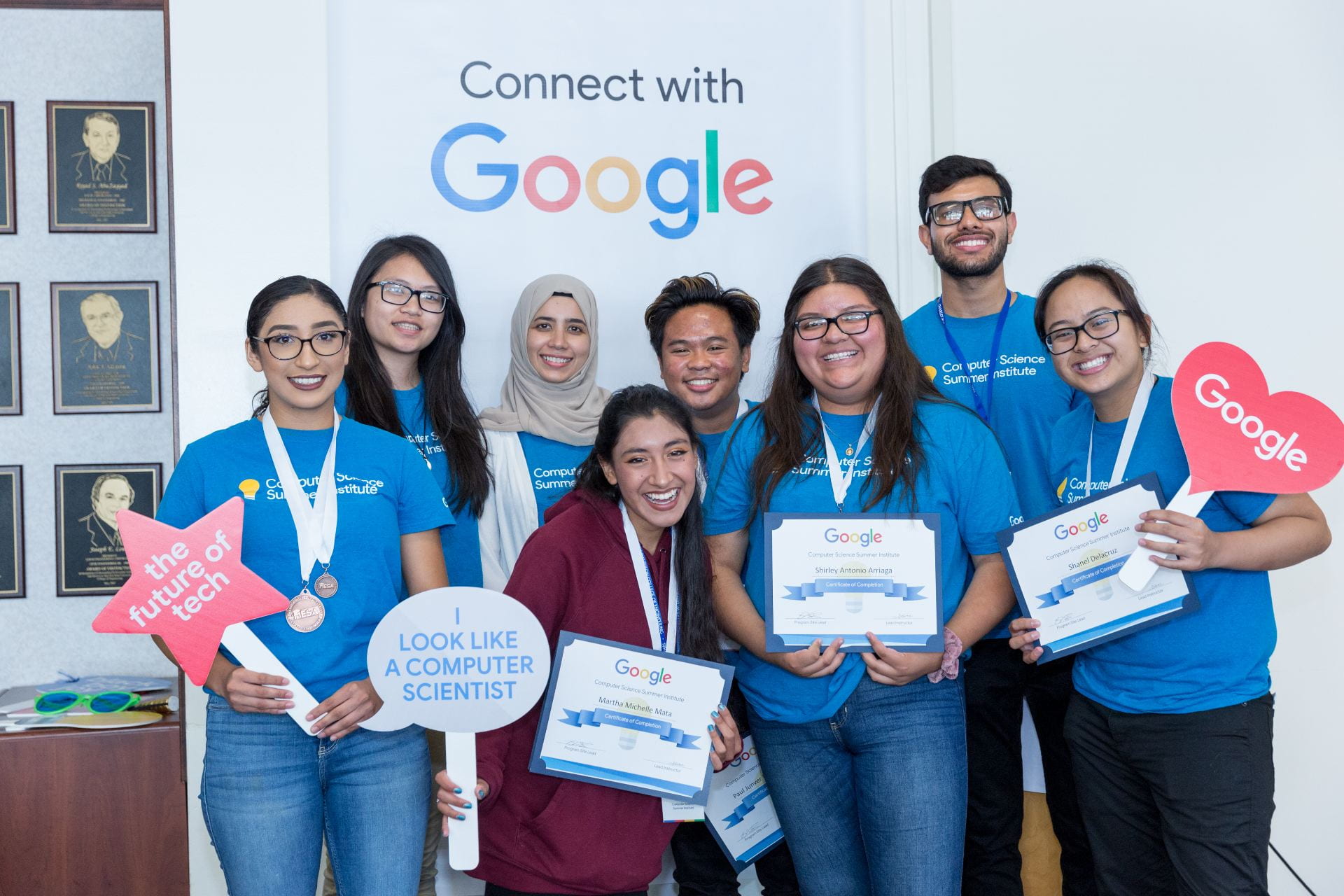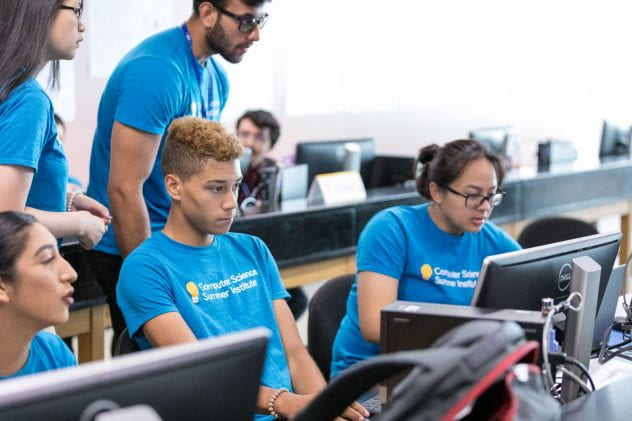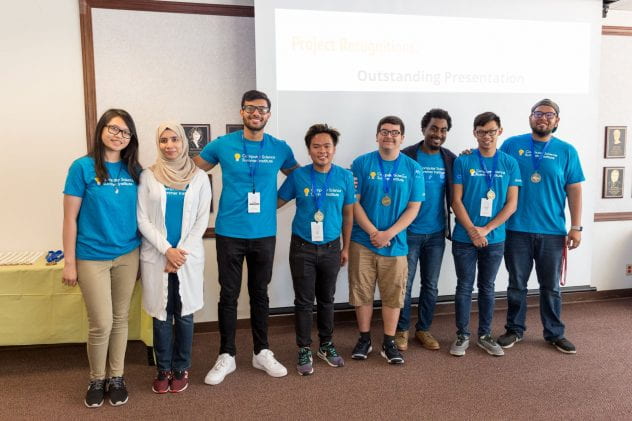
SJSU students and educators celebrate on the last day of Google’s Computer Science Summer Institute Extension Program. Photo by David Schmitz
This July, 18 incoming freshmen engineering and computer science students got a head start on their studies at Google’s Computer Science Summer Institute (CSSI) Extension. The students spent two weeks learning programming fundamentals and a mix of languages such as HTML, CSS, Python, JavaScript and others, then spent a week developing their own web-based application.
On Aug. 2, representatives from Google, SJSU, family and friends gathered to watch the students’ final presentations. When the students started the program, three weeks before, most of them had no experience with programming.
Ray Sawyer, a student development specialist at Google, said a few words before the students shared their apps.
“Our main goal is the opportunity to create and increase confidence and passion for technology,” he said, noting that Google engineers volunteered with the summer institute and the students toured the Mountain View headquarters. “I was here on Day 1 and I can see these students are sitting a little taller, smiling a little more and they are more confident. To witness this right here—that is success.”
SJSU Assistant Professor of Computer Science Nada Attar completed a course herself to learn how to teach the CSSI curriculum. Blanca Sanchez-Cruz, the assistant director for Student Support Programs in the Charles W. Davidson College of Engineering and director of SJSU’s MESA Engineering program, helped to recruit students from the College of Science and the College of Engineering.
“We did not want to limit it to computer science or software engineering majors,” Sanchez-Cruz said. “Most engineering majors have to take an intro to coding course. We are seeing a need for coding across disciplines.”

Students work on their final assignments during Google’s Computer Science Summer Institute Extension. Photo By David Schmitz
The students were presented with a simple prompt for their app design – create something that solves a problem. The groups came up with ideas for self-improvement, such as an app to help students make healthy choices around diet and exercise, or focused on supporting the campus community, such as an app to help students find professors and classes that match their learning styles.
“We are seeing students with social awareness and social consciousness,” said Sanchez-Cruz.
While the students presented and demonstrated their apps, a panel of judges that included Attar, Sawyer and two teaching assistants, took notes to determine three awards: outstanding presentation, innovative idea, and technical skills. Audience members also voted using a Google form to select an Audience Choice Award.
The first team to present won the Technical Skills award. The trio created a website they called SHOCK – Students Helping Our Community Kindly – that listed references for homeless residents and included a donate button. They deployed their site using Google Cloud Platform and said if they had more time, they would have made the site more interactive.

Ray Sawyer, third from the right, a student development specialist at Google, poses with students during the final day of the CSSI Extension program. Photo by David Schmitz
Of the teams, four students who worked on an app called “Find My Classmate” received the Outstanding Presentation Award. They created a web app that allows students to register and find other colleagues in their same major, then connect via social media apps.
Two other students received the Innovative Idea award for creating Bimonthly Improvement. The website allows users to spend two months focused on a specific self-improvement topic such as sleep.
The duo enjoyed getting to know each other through the challenge.
“We made many errors when coding, but we had a fun time fixing them,” said Jesse Nguyen, of working with his partner Alexander Lane.
The team to win Audience Choice included three students who created an app for people to give away free items to other people in their community.
“When we were brainstorming, we had trouble balancing ideas with what’s doable,” said student Jennifer Yang. “We settled on a donating app.”
She and colleague Jared Garcia did most of the back-end coding.
“There were lots of errors and getting lost and finding the solutions,” Yang said. “That’s what software engineering is.”
